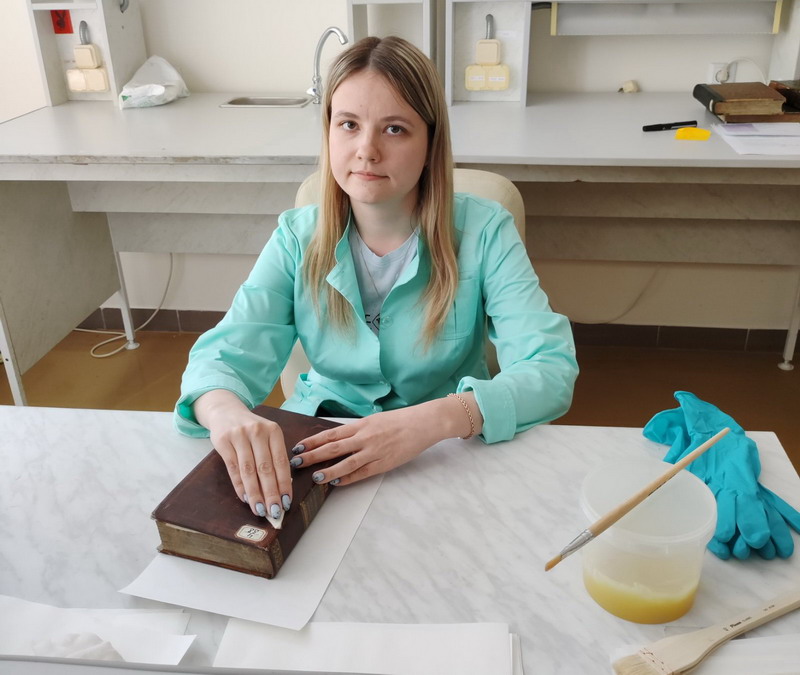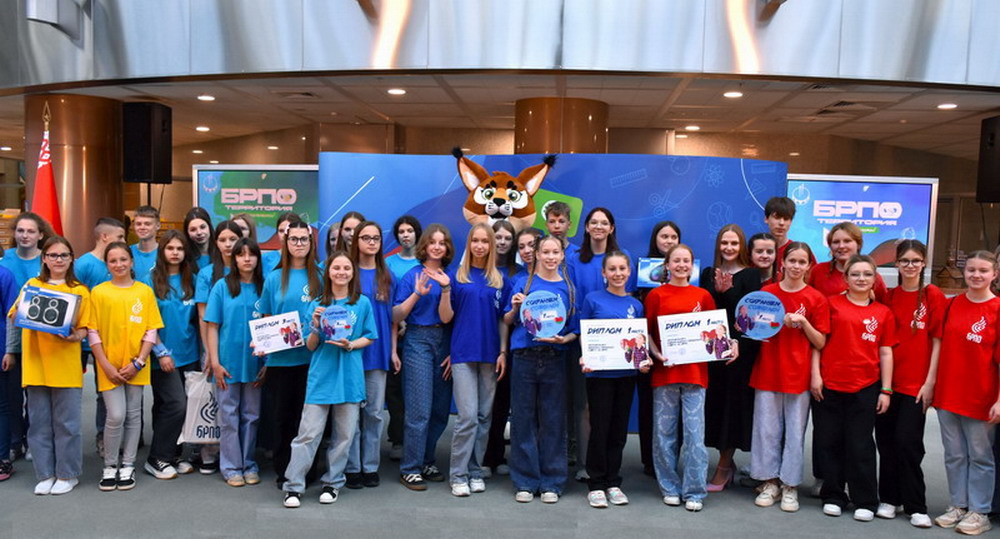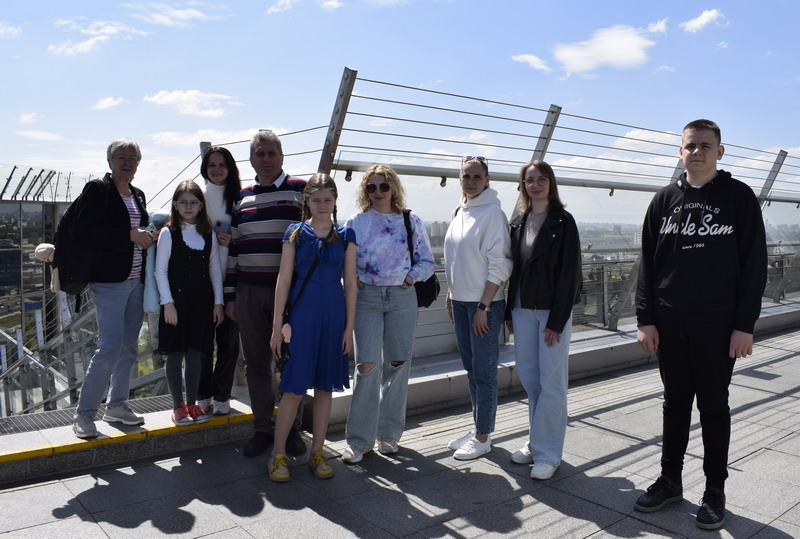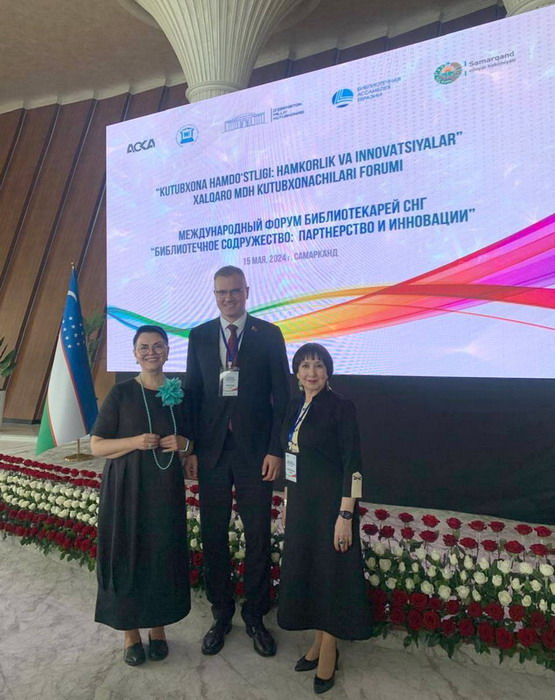A new project of the National Library of Belarus is dedicated to the Great Patriotic War – "Reading newspaper lines with your heart. On the 80th anniversary of the liberation of Belarus from the Nazi invaders."February 26th. "The Council of People's Commissars of the USSR adopted a resolution "On urgent measures to restore livestock farming of collective farms in the regions of the Byelorussian SSR liberated from the German invaders." [1418 days of the Great Patriotic War..., pp. 296-297].
Every week from January to August 2024, the portal of the National Library publishes materials from newspapers of Soviet Belarus in 1944, reflecting the chronicle of news and events of that time.
"A new brilliant victory on the Dnieper" – a large article with this title was published in the newspaper Savetskaya Belarus [No. 30, p. 3] about the battles in the area of Rogachev and Zhlobin.
The entire page of the Savetskaya Belarus newspaper [No. 33, p. 2] was devoted to materials under the general heading "Glorious Son of Belarus Alexander Isachenko", dedicated to the deeds and memory of the legendary partisan, who received the title Hero of the Soviet Union posthumously on January 1, 1944.
Newspapers continued to publish materials on the celebration of the 26th anniversary of the Red Army: meetings were held in partisan detachments and many villages of the Gressky district; partisans celebrated the holiday with derailed enemy echelons [Stalinets, No. 12-13].
The order of Comrade I. V. Stalin for the Day of the Red Army dated February 23, which summed up the military successes for the year and set tasks for soldiers and officers of the active army, partisans and partisans, caused widespread discussion in society. The newspaper Savetskaya Belarus published materials about rallies that took place in military units, in liberated cities, at enterprises, and on collective farms.
The photo shows a rally in a military unit [Savetskaya Belarus, No. 30, p. 3]:

At rallies and meetings, decisions were made to raise funds in favor of the Red Army for an early Victory. The workers of the Vesuvius plywood and match factory (already known to readers) raised funds for the tank column [Savetskaya Belarus, No. 30, p. 1]. Residents of Rechitsa and Rechitsky district named their future tank column "Rechitsa's Answer" [Savetskaya Belarus, No. 31, p. 1]. Residents of the Lioznensky district of the Vitebsk region also joined the general movement ["Vicebsky workers", No. 21, p. 1].
The workers of the Dnipro-Dvinsk Shipping Company at the meeting decided to build the Gomel Vodnik aircraft with their own money [Savetskaya Belarus, No. 30, p. 4].
The collective farmers of the Voroshilov collective farm of the Mozyr district of the Polessky region transferred their personal savings to build a squadron of Polessky Partisan aircraft. Their open letter to I. V. Stalin was published together with the return greeting of the head of the USSR on the front page of the newspaper [Savetskaya Belarus, No. 34, p. 1].
"In February 1944, at the initiative of the collective farmers of the Voroshilov agricultural cartel of the Mozyr district, fundraising began for a squadron of combat aircraft "Polessky Partisan". In March-April, 475 thousand rubles in money and 35 thousand rubles worth of government bonds were collected and contributed to the Red Army fund. These funds were used to create tank columns and air squadrons "Gomel", "Rechitsa's Answer", "Riverman of Belarus" and others" [Belarus – from liberation to independence ., p. 6].
Bonuses, salaries for several days, precious metals, and jewelry could be transferred to the Defense Fund. This was not an isolated phenomenon – during the Great Patriotic War, 17 billion rubles in cash were contributed to the Defense Fund, 1.7 billion rubles worth of jewelry were handed over, in general, this covered about 15% of the USSR's military expenditures [Yelkov, I. "This tank will smash Hitler!"].The state offered loans from the Agricultural Bank to collective farms (collective farms) and individual collective farmers for the construction of premises and an increase in the number of animals, as well as workers, specialists and employees of land authorities for individual housing construction [Savetskaya Belarus, No. 32, p. 3].
It is interesting that at the same time there were circulations of winnings on loans, the winning numbers of the loan of 1938 were printed in the newspaper ["Vicebsky Rabochy", No. 22, p. 2].
One of the most important tasks of restoring peaceful life is to establish a full cycle of agricultural work.
Technology played a significant role in this. As is known, the mechanization of agriculture became one of the reasons and successful results of collectivization in the USSR: large farms could introduce advanced production methods much more intensively, and with the help of technology, they could carry out land cultivation, sowing, and harvesting more efficiently and faster. In the liberated territories of Belarus, it was necessary to resume the general economic system as soon as possible, including in terms of food production to provide the army and the population of villages and towns.
On the front page there is a lot of material devoted to the problems of MTS – machine and tractor stations – and ways to solve them [Savetskaya Belarus, No. 31, p. 1]: existing tractors had to be repaired, machines sent from other regions of the USSR had to be accepted, premises prepared for them, offices, residential buildings and others .
To increase marketable products and livestock of domestic animals in agriculture, the method of contracting was used, in which collective farms and/or individual peasant farms received certain assistance from the state and in return handed over certain products and animals to it. Since 1933, contracting has become one of the most important methods of providing cows to individual farms of all collective farmers and replenishing the collective farm herd with calves, the latter is mentioned in the article by the senior zootechnician of the Surozhsky district ["Vicebsky workers", No. 21, p. 2].
To improve the nutrition of workers and employees in cities, the Council of People's Commissars of the USSR obliged the regional and regional executive committees and Councils of People's Commissars of the republics in 1944 to allocate 20% more acreage (to provide individual and collective gardens). This was stated in a TASS notification reprinted in the newspaper – "The development of individual and collective gardening in 1944" ["Vitsebsky workers", No. 21, with 1].
Materials continued to arrive from the liberated areas.
The current article by the engineer-captain contained information on precautions and the neutralization of mines left by the enemy during withdrawal [Savetskaya Belarus, No. 33, p. 4].
The special correspondent of the newspaper Savetskaya Belarus prepared a large material about Mozyr [No. 31, p. 1], in which he gave information about the pre-war city, told about life under occupation, about enterprises and institutions reviving after liberation.
Waterways were an important part of the national economy. The rafting office has resumed work in Mozyr [Savetskaya Belarus, No. 31, p. 1], whose tasks included timber rafting.
The Dnipro-Dvina Military Rehabilitation Directorate has published an announcement on accepting applications for the transportation of goods along the rivers of Belarus [Savetskaya Belarus, No. 31, p. 4].
The Dnieper-Dvina Military Reconstruction Department was established on April 1, 1942, and has been located in Gomel since November 1943. First of all, his tasks included examining the condition of ships, industrial buildings and structures, accounting for the surviving part of the river transport economy; personnel selection; organization of work on lifting and repairing ships, restoration of coastal structures; arranging transportation of military and national economic goods [Restoration work...].Consumer goods were delivered to the liberated areas of the Mogilev region, the Lioznensky district of the Vitebsk region ["Savetskaya Belarus", No. 31, p. 4; "Za Radzimy", No. 33, p. 2; "Vicebsky Rabochy", No. 22, p. 2].
The State Peat Reclamation College resumed its work in Gomel ["Savetskaya Belarus", No. 30, p. 4]; updated radio stations began operating in the Mogilev region; schoolchildren from the Kostyukovichi district collected 40 tons of ash, a valuable fertilizer ["Savetskaya Belarus", No. 32, p. 3]; collective farmers of one of the collective farms in the Liozno district organized the construction team began to build houses instead of those burned down during the occupation [Savetskaya Belarus, No. 33, p. 1]; the front-line brigade of the Second Belarusian State Drama Theater successfully performed in front of the fighters; I especially liked the staging of K. Krapiva's play "Trial by Fire" ["Savetskaya Belarus", No. 34, p. 1], written in 1942. In honor of the liberation of the city and the large Rogachev railway station, a large concert of Belarusian music was held in the military unit [Savetskaya Belarus, No. 30, p. 4].
Libraries continued to be completed and sent to the liberated areas: 850 sets of agricultural literature have recently been sent to collective farms and reading houses, and about 250 more sets were being prepared [Savetskaya Belarus, No. 34, p. 4].
The newspaper "Vicebsky Rabochy" [No. 22] in the headline of the front page carried out the words about native Belarus: "The mass expulsion of the occupiers from Soviet Belarus has unfolded: Gomel and Polessky regions, a number of districts of Mogilev and Vitebsk regions have been almost completely liberated. I. Stalin".
There were still several months of offensive by our troops ahead.
There were 26 weeks left before the release…
The material was prepared by L. G. Tupchienko-Kadyrova,
Candidate of Historical Sciences, chief bibliographer
of the information and analytical department.
Sources
Newspapers*
Full issues of newspapers are available at the links.
- Віцебскі рабочы : орган Віцебскага Абласнога і Гарадскога Камітэтаў КП(б)Б, Абласнога і Гарадскога Саветаў Дэпутатаў Працоўных, 1944, № 20.
- Віцебскі рабочы, 1944, № 21.
- Віцебскі рабочы, 1944, № 22.
- За Радзіму : орган Магілёўскага абласнога і гарадскога КП Беларусі і абласнога і гарадскога Савета дэпутатаў працоўных, 1944, № 32, 33.
- За Радзіму, 1944, № 33.
- Савецкая Беларусь : орган ЦК КП(б) Беларусі, Саўнаркома і Прэзідыума Вярхоўнага Савета БССР, 1944, № 30.
- Савецкая Беларусь, 1944, № 31.
- Савецкая Беларусь, 1944, № 32.
- Савецкая Беларусь, 1944, № 33.
- Савецкая Беларусь, 1944, № 34.
- Сталінец : орган Грэскага райкома КП Беларусі і раённага Савета дэпутатаў працоўных, 1944, № 12–13.
*The titles of the newspapers are given in accordance with modern spelling.
Sources
Books
- Беларусь – от освобождения к независимости (к 75-летию освобождения Беларуси от немецко-фашистских захватчиков) // Гомельский облисполком // Материалы для членов информационно-пропагандистских групп / Комитет экономики облисполкома ; Главное управление идеологической работы, культуры и по делам молодежи облисполкома; Гомельский областной музей военной славы. – 2019. – 20 июня. – 10 с.
- Били, бьем и будем бить [Изоматериал] : Не верьте фашистским брехунам о победах над партизанами… : [плакат]. – [Б. м. : б. и., между 1942 и 1944]. – 1 л. : [цв. литография].
- Восстановительные работы на речном транспорте : для возрождения хозяйства // Милитера ("Военная литература"). – Гл. 12. – Рэжым доступу: http://militera.lib.ru/h/rechnoy_transport_v_vov/12.html. – Дата доступу 20.02.2024.
- Днепро-Двинское военно-восстановительное управление Центрального военно-восстановительного управления Народного комиссариата речного флота СССР // Архивы Беларуси. Фондовый каталог государственных архивов Республики Беларусь. – Рэжым доступу: https://fk.archives.gov.by/fond/123591/. – Дата доступу 20.02.2024.
- Елков, И. "Этот танк разобьет Гитлера!": как знаменитости и простые советские люди помогали фронту / И. Елков // Рэжым доступу: https://rg.ru/2023/04/05/etot-tank-razobet-gitlera.html. – Дата доступу 19.02.2024.
- Панчанка, П. Е. Дарога вайны : вершы / П. Панчанка ; [рэд. П. Глебка ; вокладка Б. Малкіна]. – [М.] : Савецкая Беларусь, 1943 (друкарня "Известий"). – 61, [2] с.
- Панченко, П. Е. Тебе, Беларусь! : фронтовые стихи / П. Панченко ; авториз. пер. с белорус. Ц. Солодаря. – М. : Молодая гвардия, 1942. – 31, [1] с.
- Кривоногов, П. А. Партизан, мсти за Родину! [Изоматериал] : [плакат] / художник П. Кривоногов. – Москва ; Ленинград : Искусство, 1943 (Москва : Литография изд-ва "Искусство"). – 1 л. : хромолитография.
-
Припятская сплавная контора (сплавконтора) // Архивы Беларуси. Фондовый каталог государственных архивов Республики Беларусь. – Рэжым доступу: https://fk.archives.gov.by/fond/127868/. – Дата доступу 20.02.2024.
- 1418 дней Великой Отечественной войны : хронология событий : хронология событий : [солдату Великой Отечественной посвящается / сост. Е. В. Малашевич ; науч. ред.: Е. И. Барановский, Г. И. Баркун ; фото: В. В. Харченко]. – Минск : Мастац. літ., 2014. – 421, [1] с.










